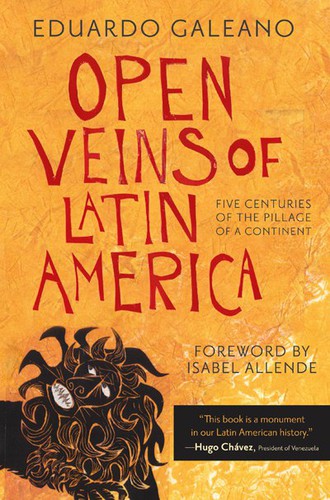317 pages
English language
Published March 3, 1997 by Monthly Review Press.

317 pages
English language
Published March 3, 1997 by Monthly Review Press.
Historia del saqueo de America Latina que muestra como funcionan los mecanismos actuales del despojo: los tecnocratas en jet, herederos de los conquistadores en carabela; Hernan Cortes y los infantes de marina; los corregidores del reino y las misiones del Fondo Monetario Internacional; los dividendos del trafico de esclavos y las ganancias de la General Motors. El tiempo presente ha sido presentido y engendrado por las contradicciones del pasado.
//
Since its U.S. debut almost fifty years ago, this brilliant text has set a new standard for historical scholarship of Latin America. It is also an outstanding political economy, a social and cultural narrative of the highest quality, and perhaps the finest description of primitive capital accumulation since Marx.
Rather than chronology, geography, or political successions, Eduardo Galeano has organized the various facets of Latin American history according to the patterns of five centuries of exploitation. Thus he is concerned …
Historia del saqueo de America Latina que muestra como funcionan los mecanismos actuales del despojo: los tecnocratas en jet, herederos de los conquistadores en carabela; Hernan Cortes y los infantes de marina; los corregidores del reino y las misiones del Fondo Monetario Internacional; los dividendos del trafico de esclavos y las ganancias de la General Motors. El tiempo presente ha sido presentido y engendrado por las contradicciones del pasado.
//
Since its U.S. debut almost fifty years ago, this brilliant text has set a new standard for historical scholarship of Latin America. It is also an outstanding political economy, a social and cultural narrative of the highest quality, and perhaps the finest description of primitive capital accumulation since Marx.
Rather than chronology, geography, or political successions, Eduardo Galeano has organized the various facets of Latin American history according to the patterns of five centuries of exploitation. Thus he is concerned with gold and silver, cacao and cotton, rubber and coffee, fruit, hides and wool, petroleum, iron, nickel, manganese, copper, aluminum ore, nitrates, and tin. These are the veins which he traces through the body of the entire continent, up to the Rio Grande and throughout the Caribbean, and all the way to their open ends where they empty into the coffers of wealth in the United States and Europe.
Weaving fact and imagery into a rich tapestry, Galeano fuses scientific analysis with the passions of a plundered and suffering people. An immense gathering of materials is framed with a vigorous style that never falters in its command of themes. All readers interested in great historical, economic, political, and social writing will find a singular analytical achievement, and an overwhelming narrative that makes history speak, unforgettably.
This classic is now further honored by Isabel Allende’s inspiring introduction. Universally recognized as one of the most important writers of our time, Allende once again contributes her talents to literature, to political principles, and to enlightenment.